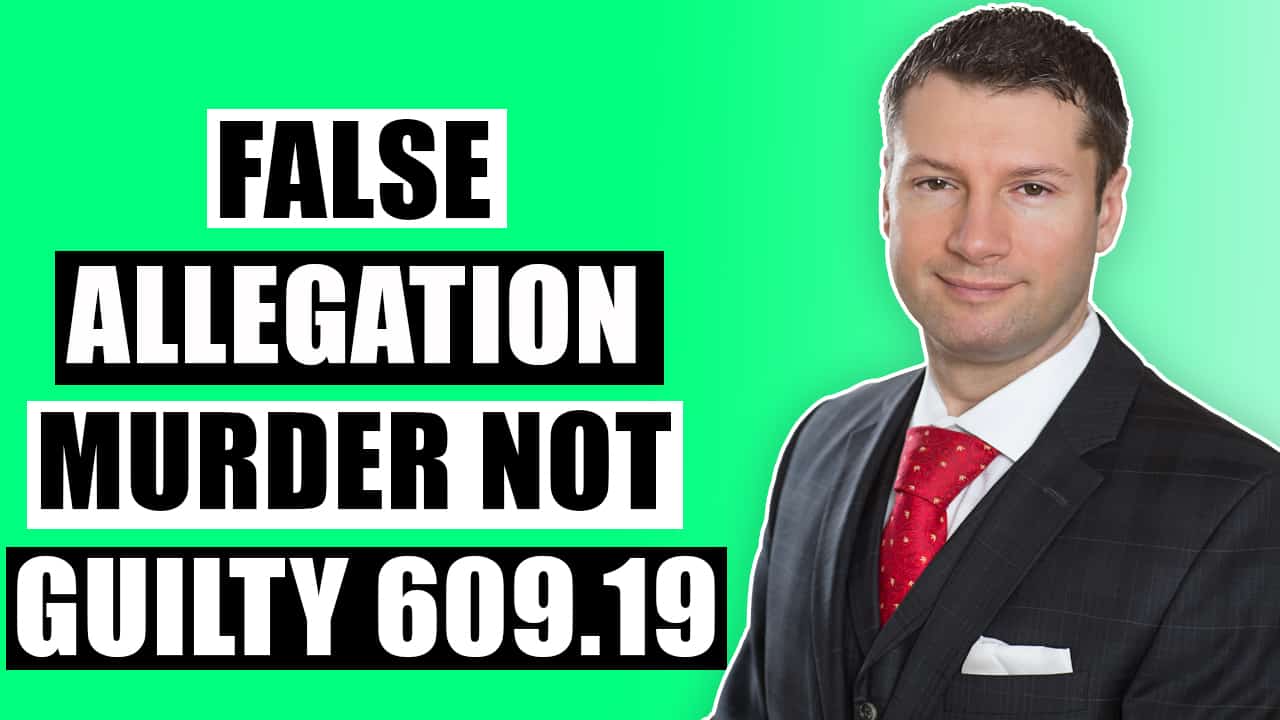
Is it really a thing to be falsely accused of such a horrible crime? Unfortunately, yes. In fact, I am going to go into detail about a real case. The theory in the case was that law enforcement told some very important lies, and we exposed those to the jury. Even before, we’ve had some reckoning with the idea that there can be false claims. Many jurors back then, of course, believed that law enforcement would never lie, especially never make a false accusation in a case that’s so serious. But we know, unfortunately, that law enforcement is human, and that there are good apples and some bad apples, and sometimes those bad apples will tell lies.
The Situation
In this case, this murder accusation, there was a shootout out in front of a bar in St. Paul. Rival gang members. My client and his friend started running after the shootout, and the guy that was shot actually died. He was in the shootout as well, but he didn’t survive the shootout. Whole bunch of squad cars are on their way to this bar, sirens blaring and everything else, right? So these guys are running up a sidewalk, and they turn down an alley, and they’re right here in the alley. In the meantime, law enforcement is heading this way with their squad car, and they’ve got their spotlight shined out towards the alley. They see these two guys in the alley. These two guys, knowing that they were just in a shootout, immediately ran between two houses, like this. Law enforcement, whose car was here, puts on their car in reverse as fast as they can.
Now, the issue was, we didn’t believe our client was the actual shooter. We think the shooter was the other guy. That was his friend, but law enforcement charged our client with the murder.
So, What Happened?.
As our client is running between the two houses, law enforcement’s got their squad car in reverse. They claimed that they saw our client trying to throw a firearm up onto the roof of this house here, and that the firearm didn’t make it onto the roof, and he started to run this way, and they tackle him there. They said that they recovered the firearm in the front yard right here. Well, some things stuck out to me here, and I started to wonder if they were lying about some things.
When we get to the trial, I started to ask questions. Now, having grown up in St. Paul, I know these streets, and I went out to the scene and investigated it several times with experts. I asked the officer some questions out there and everything. And one of the things we know is that in St. Paul, especially in residential streets, cars are parked all along both sides of the street like this. This is a very busy residential area. If you’re law enforcement, and you’re going to put your car in reverse, because that’s what they said they did, you’re going to be able to hit this car and drive it between these cars in reverse faster than somebody could just run right between two houses? That’s pretty hard to believe.
When We Went to Trial – Exposing the Lie
So when I asked the officer in a trial, “Well, wait a minute. You couldn’t have beat him out to that corner,” the officer said, “Oh yeah, we did.” And I said, “Well, how did you do that if you’re driving in reverse?” And I said, “Did you jump out of the car while it was driving in reverse?” And the officer said, “Yeah.” And so I showed the jury, “Well, obviously if the door opens, as you’re moving in reverse, your door is going to run you right over. That can’t happen.”
The jury picked up on that lie. The reason that the officer was lying about that is because he knew that he had to try to prove to a jury that he would have been at an angle where he could have seen to the front of this house, because this house sticks out farther. And so he picked up on that when I was questioning him, and now he was trying hard to be able to establish that his car could have got back and not just even, but further back enough to see, because you can’t see through a house here. That was a big red flag in the case. But then there was a bigger one.
Officers were testifying about things that were not consistent with what they wrote in their reports. I was pointing that out to the jury. Next, the jury was starting to get suspicious, but there were some people on the jury that just believe that in every situation, law enforcement is going to tell the truth.
In addition to that, I started to look through every photo of the firearm. And there were well over about 100 photos of this firearm at the scene. Remember, they said that he tried to throw it up onto the roof, but it just went straight up in the air and came down, and it was laying in the front of the yard. They saw all of this with their own two eyes, they said. So then I started to ask them, “Well, did you ever move the firearm while you were photographing the firearm at the scene?” “No, no, no. We never moved it.” “Are you sure?” “We’re sure.” I asked the photographer officer, “Did you ever move it?” “No, I never moved it.” “Did anybody move the firearm?” “No.” “Did you all watch the firearm the whole time it was being photographed?” “Absolutely. It’s a key piece of evidence.” So nobody moved the firearm the whole time you guys were taking all the photos, right?” “Right.” Okay.
The jury was split in our favor, but it wasn’t a unanimous not guilty verdict. So it goes back to a second trial, because that’s called a hung jury. And in that trial, the officers started to testify differently than they even did in the first trial. So now I had three different versions from the officers: their reports, what they testified to in the first trial, and now their changed testimony in the second trial. So three different situations going on. None of them were consistent, and the jury picked up on that.
Second Trial Victory
The jury saw right through that the second trial. It was a two-week trial the second time around. They found him not guilty within about 45 minutes. One of the jurors hugged my client, and that client, who’s a father of two, he and I remain friends to this day. We stay in contact with each other. He’s raised two children now. He stayed law-abiding. He cut off ties with people who weren’t doing good things. He promises me to this day, of course, that he wasn’t the one that had the firearm that day. And I believe him.
The moral of the story is that I have this picture, this exhibit from the trial, hanging in my office for a reason, and it’s to remind me to peel back the layers of the onion and to turn over every stone in every case. Because sometimes, it’s just those one little things where we can catch something and we can uncover a false accusation. Those false accusations can change people’s lives. Sometimes you just need somebody to believe you when they’re saying, “I really didn’t do this.” Because everything else can look bad, and people form quick judgments, but at the end of the day, you’re presumed innocent. It’s the government’s job to prove your guilt beyond a reasonable doubt. It’s not your job to prove your innocence. There are people who will stick up for you, whether they’re your family members that will support you or lawyers that will believe in your cause and will fight to uncover false accusations when they happen, and hopefully to change lives and to get true justice out there for people.
So if you’re facing a false accusation, no matter what kind of case it is, just know that you can call me. I’m Criminal Defense Attorney Ryan Pacyga. You can find me at ArrestedMN.com, or give me a call at 612-474-5420.

